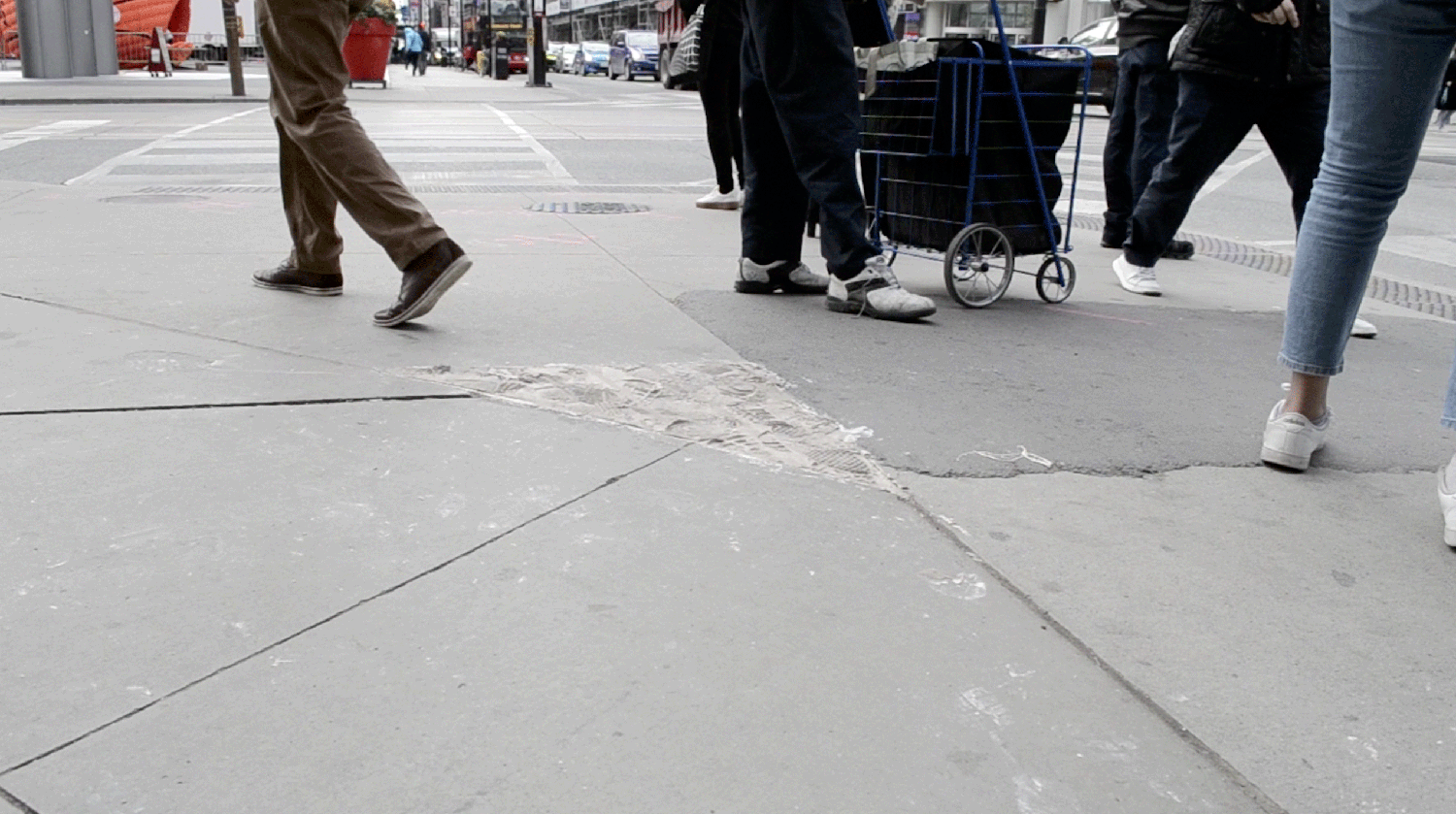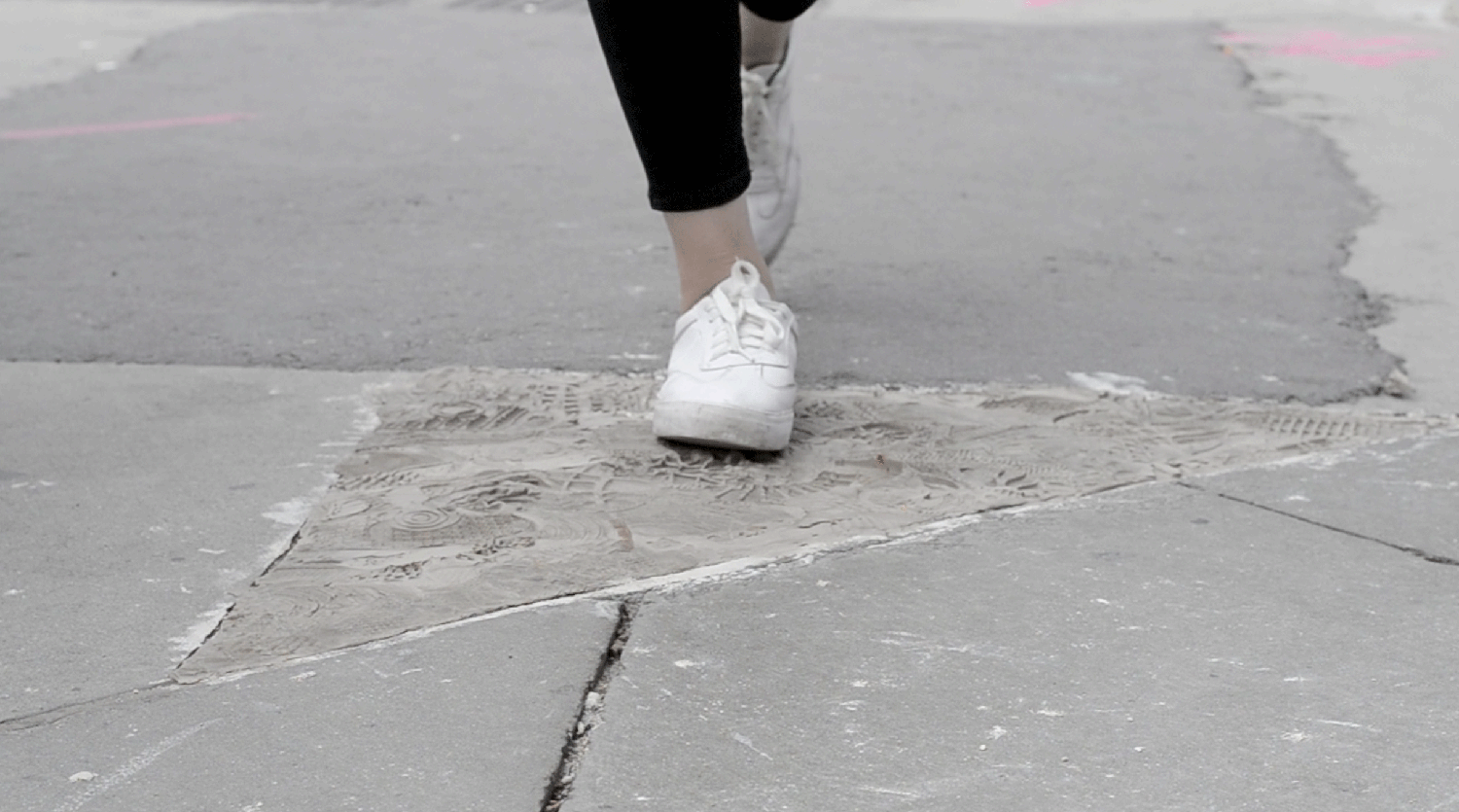Passing, 2018
Public intervention
(00:07:35)
October 18th at 9:30AM,
A slab of clay was placed on the North East corner of Yonge and Dundas square.
I have always made art the studio. Art as a physical object to be looked at, held and be exhibited in a gallery seemed comfortable. However, there was an itch to get out of the art as an object space as I was being more and more drawn to works by artists such as Francis Alys, Sophie Calle, Kelly Mark; those who extended the work of art as not an object to admire, but integrates itself into the everyday. What is intriguing about their work is their mundane quality. Because of this quality, the work reads quite literally. Francis Alys’ Looking Up creates a public disruption as people start to wonder what this individual is looking so intently toward, causing them to stop and look for themselves. With Passing I wanted to make work which caused a subtle disruption in public while also allowing the public to manipulate and participate in the work, unknowingly. This way, the work does not scream “Art!” yet, there is enough purpose and direction from the artist to document the slab of clay changing over time with the public’s mundane action of simply walking (the “viewer” of the moment completes the work). It marks the passage of time while also talking about permanence and temporality. The slab of clay is compared to wet pavement. While the wet pavement preserves the footprints of the passersby, the nature of clay holds imprints for as long as it does not dry out. Clay comes from the ground, made up of minerals, dirt, plants, animal feces; everything soil. It made sense to place the clay on the ground. Yonge and Dundas is an extremely busy area filled with different people in different stages of their lives: students, business figures, construction workers, service workers, customers, and tourists. Having grown up in Toronto, I’ve noticed that most people who meet at Yonge and Dundas commute from elsewhere. The commodities around this area allows it to be a place of attraction to the general public who come and go as they need to. The location has constant traffic. For that reason, the slab of clay was placed in the area. As well, the clay had to blend in with the sidewalk. On the North East corner there was a perfect sized triangular section of the sidewalk where the clay could be placed. The North East corner was also ideal because it was quiet and filled with people who were busy getting to their destination, unlike the south west corner where street artists and religious advocates were located. Here, the slab of clay would go unnoticed and a natural formation of the traffics footprints could be made. It is important to note the clay dried out after five hours, eventually losing all traces of footprints. The next day, the whole slab turned into a pile of dust. Temporality is captured in this process as people come and go in this busy location, their traces are replaced with others, then completely lost with time.


